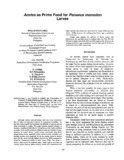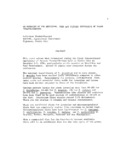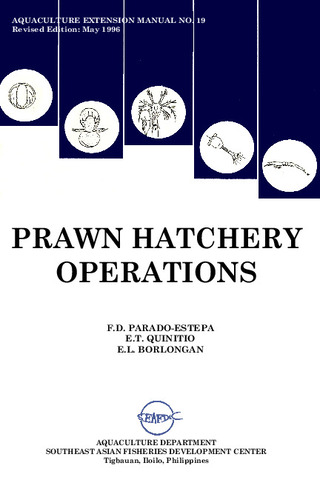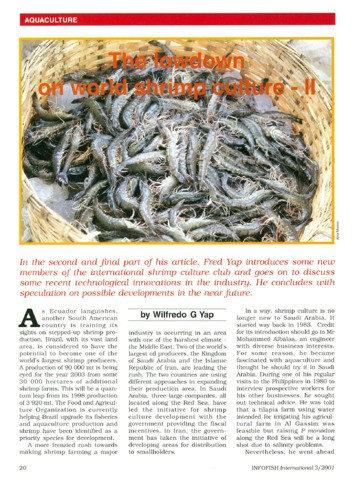Acetes as prime food for Penaeus monodon larvae
Share
Abstract
This paper presents research attempts to develop a suitable artificial diet for shrimp larvae with locally-available materials. Larval rearing experiments using finely ground Acetes tissues conducted under various climatic conditions and hatchery systems were completed. In the dry season, larvae in outdoor tanks fed dry Acetes had the highest survival rate (68%) compared to larvae fed Chaetoceros (48%) or fresh Acetes (39%). In contrast, larvae from an indoor hatchery reared with Chaetoceros had higher survival rate (52%) than those fed with Acetes (35%) and fresh Acetes (24%).
During rainy months, the survival of larvae reared with Skeletonema , dry and fresh Acetes in outdoor tanks was 72%, 52% and 38% and in indoor tanks 62%, 40% and 23%, respectively.
Suggested Citation
Kungvankij, P., Tacon, A. G., Corre, K., Pudadera, B. P., Taleon, G., Borlongan, E., & Potestas, I. O. (1986). Acetes as prime food for Penaeus monodon larvae. In J. L. Maclean, L. B. Dizon, & L. V. Hosillos (Eds.), The First Asian Fisheries Forum. Proceedings of the First Asian Fisheries Forum, 26-31 May 1986, Manila, Philippines (pp. 581-584). Manila, Philippines: Asian Fisheries Society.
Subject
Taxonomic term
Collections
Related items
Showing items related by title, author, creator and subject.
-
An overview of the nutrition, feed and feeding techniques of prawn penaeid/shrimps
Piedad-Pascual, Felicitas (Philippine Council for Aquatic and Marine Research and Development, 1989)This paper echoes what transpired during the first International Conference of Penaeid Prawns/Shrimps held in Iloilo City in December 4-7, 1984, particularly on the Nutrition nd Feed Development. Around 25 papers were ... -
Prawn hatchery operations
Parado-Estepa, Fe D.; Quinitio, Emilia T.; Borlongan, Emeterio L. (Aquaculture Department, Southeast Asian Fisheries Development Center, 1996-05)The manual, an updated version of the 1984 SEAFDEC/AQD manual, presents the underlying principles and step-by-step instructions of prawn larval and post-larval rearing. The techniques described are not only applicable to ... -
The lowdown on world shrimp culture - II
Yap, Wilfredo G. (INFOFISH, 2001)This paper introduces some new members of the international shrimp culture club and goes on to discuss some recent technological innovations in the industry, particularly the polyculture of tilapia (mainly Oreochromis ...






